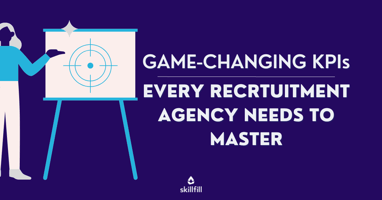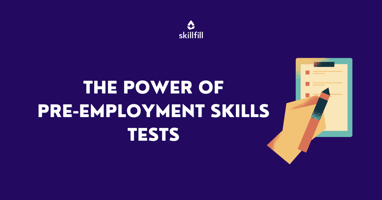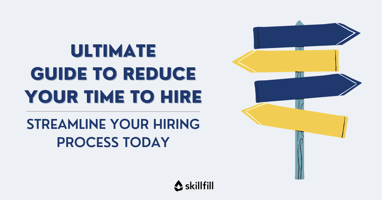Recruitment agencies play a crucial role in helping organizations find and attract top talent. In...
Recruitment KPIs: A guide to build an effective hiring strategy
Recruitment Key Performance Indicators (KPIs) are often overlooked in many companies. Unlike in other departments of a company, recruitment processes in the HR department rarely receive the same level of scrutiny and tend to be less data-driven (yet!).
With an increasing volume of HR data available, the importance to make data-driven decisions is clear on a strategic level.
But what are concrete steps HR departments can take? In this article, we will explore the significance of recruitment KPIs, how to measure them and how to make use of them to not only enhance your hiring strategy, but also be better at hiring in your everyday life.

Recruitment KPIs and why they are important
The effectiveness of recruitment efforts can only be gauged if you measure the results. Key Performance Indicators (KPIs) are the metrics that assess the performance of your recruitment processes and consolidate the data. These indicators reveal whether your recruitment efforts were successful, where most costs were incurred, and how long it takes to fill a position.
With just a few clicks, you can easily pinpoint areas in your recruitment process that require improvement.
Recruitment KPIs reveal weaknesses in your recruitment process, the associated costs, and areas where you excel. Relying solely on gut feelings is not the best approach when making such assessments. One popular example is hiring biases that happen in CV screening.
Introducing a KPI-based system may instil fear, as it might uncover errors and imperfections in your work. However, recognizing and addressing your weaknesses and optimization potential early on is crucial for sustained improvement.
Recruitment KPIs provide an accurate representation of your recruitment processes' performance. You can only optimise the data you know, making recruitment control critically important.
Moreover, as recruitment processes become increasingly digitised and software-driven, collecting and analysing data and KPIs has become more manageable. In fact, according to Statista, the amount of data in the world is doubling every 3 years at the moment - as can be seen in their visualisation. With an increased use of software in HR, we will see the same pattern with HR-specific data
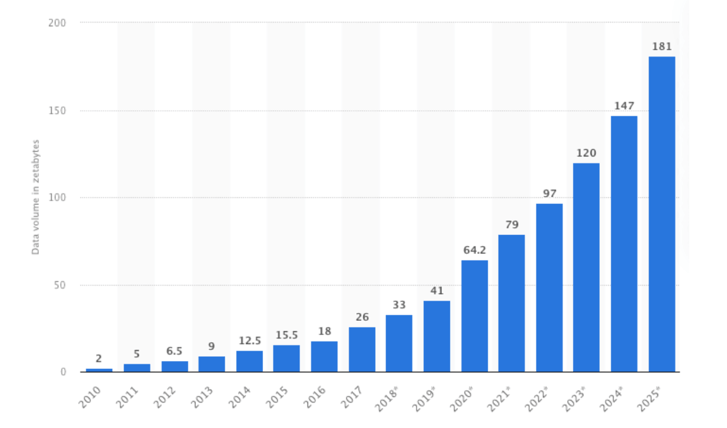
What makes good KPIs?
While there is an abundance of metrics available, not all are relevant or meaningful. Before delving into collecting and interpreting numerous KPIs, focus on identifying and choosing the most critical ones.
The ideal KPIs should meet the following criteria:
- Measurable: Are the data consistently, comprehensively, and automatically measurable?
- Relevant: Does the KPI impact the achievement of company goals?
- Comparable: Can the KPI be compared with industry, regional, or other benchmark values?
When selecting KPIs, consider both quantitative and qualitative metrics. Quantitative metrics involve the duration of various process steps, such as the number of applicants or the time it takes to fill a position.
Qualitative metrics encompass softer aspects, like assessing a candidate's suitability for the role or employee satisfaction. Measuring quality is more challenging than measuring quantity but equally important.
10 key recruitment KPIs
Several KPIs are crucial for recruitment processes. These are the fundamental metrics every organisation should monitor, offering a cross-industry insight into recruitment performance. No company can afford to overspend on hires or allow excessive delays in the hiring process.
It is essential to filter the necessary KPIs as collecting too much data can lead to unnecessary complexity. Each company should define its essential KPIs for their recruitment processes.
-
Cost per Hire: Determine the success rate of each recruitment channel.
-
Channel Effectiveness: Determine the success rate of each recruitment channel.
-
Quality of Hire: Measure how seamlessly new recruits integrate and contribute to your organisation.
-
Cost of Vacancy: Understand the financial implications of a vacant role over time.
-
Offer Acceptance Rate: Evaluate how compelling and competitive your offers are.
-
Time of Vacancy: Track how long positions remain unfilled.
-
Candidate Satisfaction: Gauge the candidate experience throughout your recruitment process.
-
Hiring Manager Satisfaction: Ascertain the effectiveness and satisfaction of those at the helm of your hiring initiatives.
-
Retention Rate: Understand the longevity of your hires within the organisation.
-
Diversity and Inclusion: Monitor the inclusiveness of your recruitment practices to foster a diverse workplace.
For more visual people, here is also an illustration of the described KPIs.
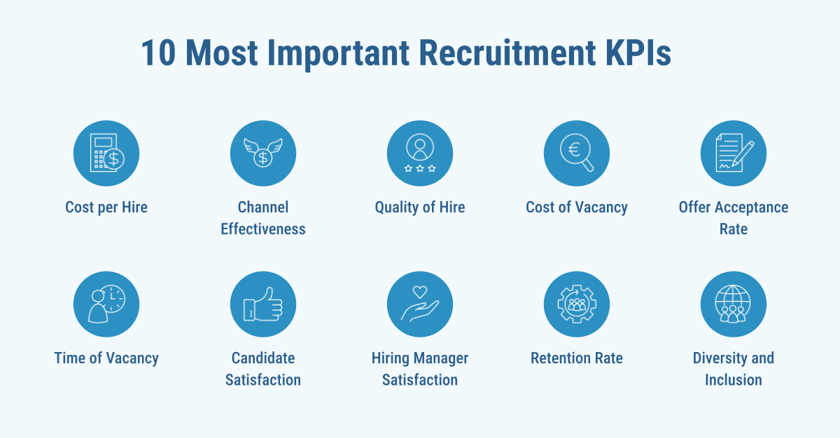
How to measure recruitment KPIs
Now that you know which KPIs are important in recruitment, the next step is measuring them effectively. You'll need a substantial amount of data, making it advisable to store this information in an HR software, such as an ERP system for human resource management. This approach provides a clear overview of process efficiency and allows the use of tables, graphs, and other visual aids to enhance data presentation.
While some KPIs, like "Time-to-Hire," are easily measured, others, such as "Cost of Vacancy," may require creative approaches. To determine the cost of an unfilled position, you can calculate the additional expenses incurred due to the absence of a qualified employee. This includes outsourcing costs compared to the salary of an in-house employee.
Furthermore, monitoring employee satisfaction and other qualitative metrics may require standardised questionnaires and other methods for regular assessment.
Linking Recruitment KPIs with your Hiring Strategy
So how do we make use of the KPIs in our daily life? This is highly dependent on the hiring strategy you follow. In a highly insightful video by Armin Trost (HR expert and Prof at Hochschule Furtwangen) explains a framework taking into account the talent availability, the strategic relevance and the demand.
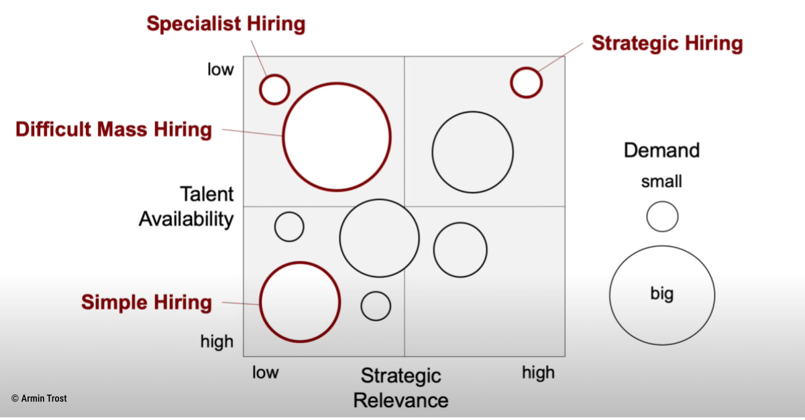
4 main use cases for your hiring strategy
Specialist Hiring
Less crucial positions such as individual contributor positions, whereas the talent availability is low, but also the demand is low since it is a very specialised profile not needed very often. This could be a CRM export, that is needed only one time in the company to make sure the CRM runs smoothly.
Strategic Hiring
Highly important positions, whereas the talent availability is low, but also the demand is low since not many positions like this exist in your company. This could be Executive level people.
Simple Hiring
Those roles are typically individual contributor roles, which are needed often and in high volume. Their availability is high and it is easy to get them. This could be an assistance job at the supermarket (times are changing though with the demographic changes).
Difficult Mass Hiring
This one is tricky. You need a lot of those people, they are important (although not every employee needs to be crucial as an individual person), but the talent availability is low. This is typically the case in data and tech, when the company size has grown to 30+ employees and there is a constant need to hire new data and tech people and replace employees that left.
Choosing the right Recruitment KPIs
With this knowledge in mind, we can now move back to the Recruitment KPIs and summarise its importance depending on the described use case.
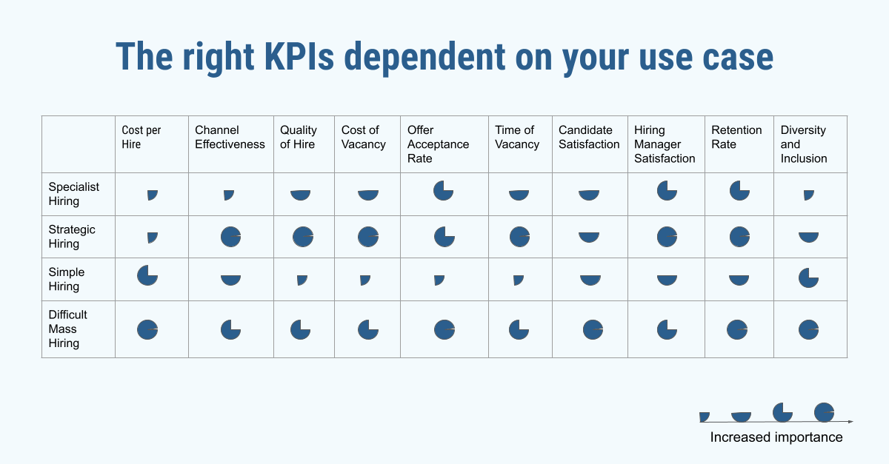
Let’s jump into the example of data and tech people, who fall into the ‘difficult mass hiring’ bucket: Since the demand is high and it is one of the most important individual contributor roles, it is of utter importance to hire them quickly with a high quality of hire and keep them in the company for long. If something goes wrong and you have a bad hire, it will be costly to hire a new person. Because of the overall high demand in the market, this is one of the most difficult roles to fill. This is why a bad hire is so costly in the long run. There are various estimates on the bad hire costs and one rule of thumb is ‘Triple the salary’. Every company has made bad hires at some point, but it is important to craft a clear hiring strategy to understand where an optimised hiring process is needed.
Conclusion
We have seen that KPIs are closely related to your hiring strategy and that data and tech talent is an example of crucial talent, which is very hard to hire. Especially in such cases it is important to keep an eye on your Recruitment KPIs to understand where hiring processes can be improved. Software solutions can help immensely in measuring the right data points and to move the needle when it comes to your KPIs.
One such solution is skillfill.ai, which helps to generate tailored skill assessments within seconds. This helps you to free up time to focus on the right talent and improve the presented KPIs such as quality of hire, hiring manager satisfaction, or diversity and inclusion while saving costs. Check it out for free 👇
AI-ASSISTED TECH TALENT ASSESSMENT
Get started for free today!

